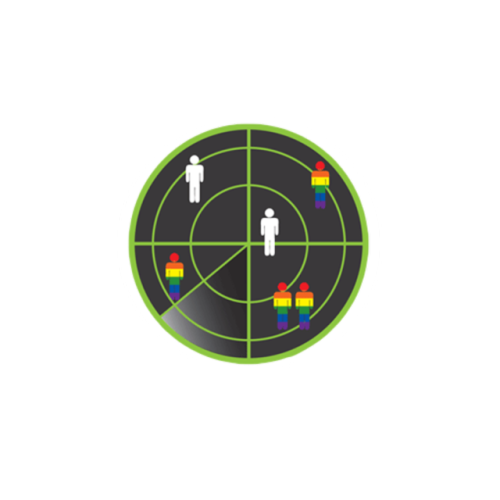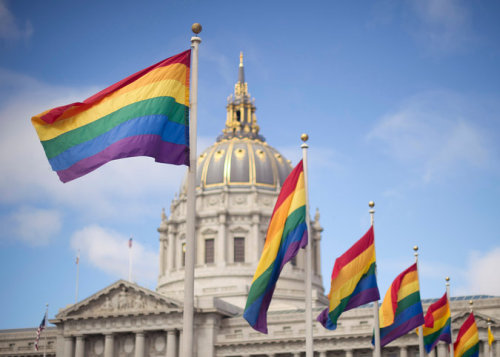#gay news
2014: Gay year in review part 2
We’ve already posted 10–6 of our ten biggest news stories, people, events and moments of 2014, and as we begin 2015, it’s now time to look back at our top 5:
5. Leelah Alcorn
The latest story in our 2014 countdown ended the year on an upsetting note, as this trangender teen from Ohio queued a suicide note on her Tumblr before walking in front of a vehicle on the Interstate Highway. If…
Year in review: Gay moments that shook the world in 2014
What a year 2014 has been! Here’s the first part of our rundown of the top 10 most important gay moments, people, events and news stories from the past 12 months.
10. Coming out in sportThis year, US footballer Michael Sam (above), US baseball player Derrick Gordon, Germany and former Aston Villa footballer Thomas Hitzlsperger, and Australian Olympic swimming legend Ian Thorpe all came out as…
Why we have pride ,
PRIDE- a becoming or dignified sense of what is due to oneself or one’s position or character; self-respect; self-esteem.
In society pride is one if those doubled edged swords we learn to balance only through life experience. Too much pride can blind you, inhibit you from seeing character flaws in yourself, flaws that could probably use some addressing. In turn, not enough pride in ones self could lead to lack of dignity as well as self confidence, and ultimately a poor understanding of ones self worth.
Growing up, the term gay carried all sorts of negative connotations. Religious or societal, the depictions of gay people throughout our recent history has been one of struggle and brutality . It was something some people were afraid or even ashamed to admit. This is the climate so many youth continue to experience today. Many have been assaulted, publicly humiliated, sexually harassed, raped, and murdered for their sexual preference or gender identity . In some countries being gay is a crime punishable by imprisonment or even death. It is for this very reason so many continue to hide or lie about their sexual preference.
The LGBTQ civil rights movement has it’s very own heroes and martyrs, Men and women who have fought for equality and some who have died for simply being who they were born to be. Harvey milk , Ellen Degenerous, Mathew Shepard are just a few popular examples of these heros and martyrs. Countless more go unspoken or recognized .
Between the the passing of legislation recognizing gay marriage in several states here In the U.S. , the activism buy athletes at Sochi winter Olympics , and finally Russian and Ugandan officials passing laws that target the LGBTQ community and their supporters ,we are officially In the eye of the storm.
Never before have issues of equality base on sexual preference and gender identity been such huge topics of discussion.
Much like any other civil rights movements ours has been meet with an opposition that hides behind the guise of a traditional value system that we all know is idealist and quite frankly naïve. This is the stance that many religious right wing officials talk about using the phrase “the gay agenda” seeking to portray gay culture as a danger to family values and religious ideals.
The irony in the claim that some people are made uncomfortable by the sight of gay public displays of affection, is that many if not all that identify as queer have been subjected to some form of shaming in their life . Weather it be in a church that rejects the idea of homosexuality and labeling it a sin. Herring it labeled as unacceptable by family and fiends or perhaps simply watching the public reaction to Michael Sam’s kiss on ESPN.
The true reasons we celebrate gay pride is to show the world we have the courage to be who we truly are . That we stand in the face of adversity and do not waver . We have pride in who we were born to be and we will no longer hide for anyone. This is us shouting to the world that we are worthy of every right that many seek to keep from us . That much like you have the right to hold your pistol or Rifle I have the right to one day hold my future husbands hand in marriage . That we are more than capable of being loving and nurturing parents. We will no longer stand by and allow you to refuse us respect or service for that matter because we all know that separate but equal was far from equal. Gay pride is us telling this country to take their neo Jim Crow laws and burn them because obviously burying them didn’t work last time . These are just a few reasons we wear rainbow attire without fear, that we knowingly hold hands in places out side the gay bar. This is why we have pride .
Finally I commend not only those of us that are gay and proud but the countless others that continue to hide for fear of persecution or even death .This burden is a struggles many of us know too well and should not go unrecognized . We are fighting for you and we will be here to welcome you with open arms when you fell the time is right.
A Steady Path to Supreme Court as Gay Marriage Gains Momentum in States
WASHINGTON — A sweeping decision on Thursday night struck down Virginia’s ban on same-sex marriage and continued a remarkable winning streak for gay rights advocates, putting new pressure on the Supreme Court to decide the momentous question it ducked last summer: whether there is a constitutional right to same-sex marriage.
Since June, when the Supreme Court ruled that same-sex couples are entitled to equal treatment in at least some settings, federal judges in Oklahoma, Utah and Virginia have struck down laws barring same-sex marriages. In state legislatures and state courts, too, supporters of same-sex marriage have been winning.
“The pace of change has perhaps outstripped the Supreme Court’s preferences, but the momentum is tremendous,” said Suzanne B. Goldberg, a law professor at Columbia.
Rapid changes in public opinion are also playing a part, said Andrew M. Koppelman, a law professor at Northwestern. “It is becoming increasingly clear to judges that if they rule against same-sex marriage their grandchildren will regard them as bigots,” he said.
Instriking down Virginia’s ban on same-sex marriage, Judge Arenda L. Wright Allen of Federal District Court in Norfolk relied heavily on the Supreme Court’s decision in June in United States v. Windsor, which ruled that the federal government must provide benefits to same-sex couples married in states that allow such unions.
The Windsor decision also figured prominently in recent rulings from federal judges striking down bans on same-sex marriage in OklahomaandUtah.
The three trial-court decisions vindicated a prediction from Justice Antonin Scalia, who dissented in Windsor. “By formally declaring anyone opposed to same-sex marriage an enemy of human decency,” he wrote, “the majority arms well every challenger to a state law restricting marriage to its traditional definition.”
He has so far turned out to be right, presumably to his bitter dismay.
In keeping with the pace of change, Judge Wright Allen’s decision was marked by haste. It was issued late in the evening, which was curious in light of the fact that it was stayed pending appeal. And its first paragraph, since corrected, initially attributed the phrase “all men are created equal” to the Constitution, though it is in the Declaration of Independence.
The decision chose just one of the plausible readings of Windsor, which contained doctrinal crosscurrents. Indeed, Judge Wright Allen quoted a long passage from Justice Anthony M. Kennedy’s majority opinion extolling the central role of states in defining marriage. That would seem to support allowing Virginia to decide whom it will let marry.
“Notwithstanding the wisdom usually residing within proper deference to state authorities regarding domestic relations,” Judge Wright Allen wrote, prompt action from the courts was required. “When core civil rights are at stake,” she said, “the judiciary must act.”
She drew on other parts of Justice Kennedy’s opinion, and she had plenty to work with. Treating same-sex marriages differently from others, he wrote, “demeans the couple, whose moral and sexual choices the Constitution protects, and whose relationship the state has sought to dignify.”
“And,” he added, “it humiliates tens of thousands of children now being raised by same-sex couples.”
Judge Wright Allen began her decision with a quotation from Mildred Loving, who successfully challenged Virginia’s ban on interracial marriage in the Supreme Court in Loving v. Virginia.
The Loving decision, which struck down such bans nationwide, is instructive in many ways, including in how to gauge the pace of change.
The Supreme Court issued the decision in 1967, which was quite late in the civil rights era. At the time, only 16 states still prohibited interracial unions.
Almost two decades had passed since the California Supreme Court struck down the state’s ban on interracial marriage in 1948.
In the meantime, the United States Supreme Court took sometimes unseemly pains, in an era when its jurisdiction was often nominally mandatory, to avoid ruling on the question.
If past were prologue, this might indicate that the Supreme Court will take its time before returning to the question of what the Constitution has to say about same-sex marriage, particularly now that the court’s jurisdiction is almost entirely discretionary.
After all, only 17 states and the District of Columbia allow such unions, not counting the recent decisions, all stayed, from Oklahoma, Utah and Virginia.
On the other hand, public opinion in 1967 was strongly against interracial marriage, while most polls show that a rapidly growing majority of Americans support same-sex marriage.
That transformation in public sentiment will not be ignored by the judiciary, Professor Koppelman said.
He added that the Supreme Court is likely to step in as soon as next year should any of the recent decisions be affirmed by a federal appeals court.
Professor Goldberg agreed that “pressure is building in society and building in the courts,” making it “likely but not inevitable that the Supreme Court will take a marriage case in the near future.”
Still, the justices are often wary of a backlash and might prefer to let the democratic process and lower courts work through contentious social issues before weighing in.
Justice Ruth Bader Ginsburg, a leading champion of women’s rights, has often said the Supreme Court should have issued a narrower decision in 1973 in Roe v. Wade rather than announcing a broad constitutional right to abortion nationwide. State legislatures, she has said, were making progress on the issue.
Justice Ginsburg’s historical account is contested, but there is reason to think that her caution played a role in the court’s failure in June to say in Hollingsworth v. Perry whether the Constitution requires states to let gay and lesbian couples marry.
The justices continue to mull the crucial question of when to weigh in when society is on the move.
Ina joint appearance last week, Justice Elena Kagan seemed to give Justice Ginsburg a nudge.
“She has been critical of certain cases, most notably Roe v. Wade, for having ruled too expansively and too quickly,” Justice Kagan said of Justice Ginsburg, who listened attentively. “But she has also recognized that when the time is right courts can play an important role in ratifying society’s progress.”
Post link




